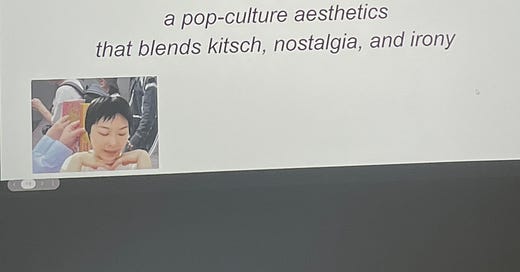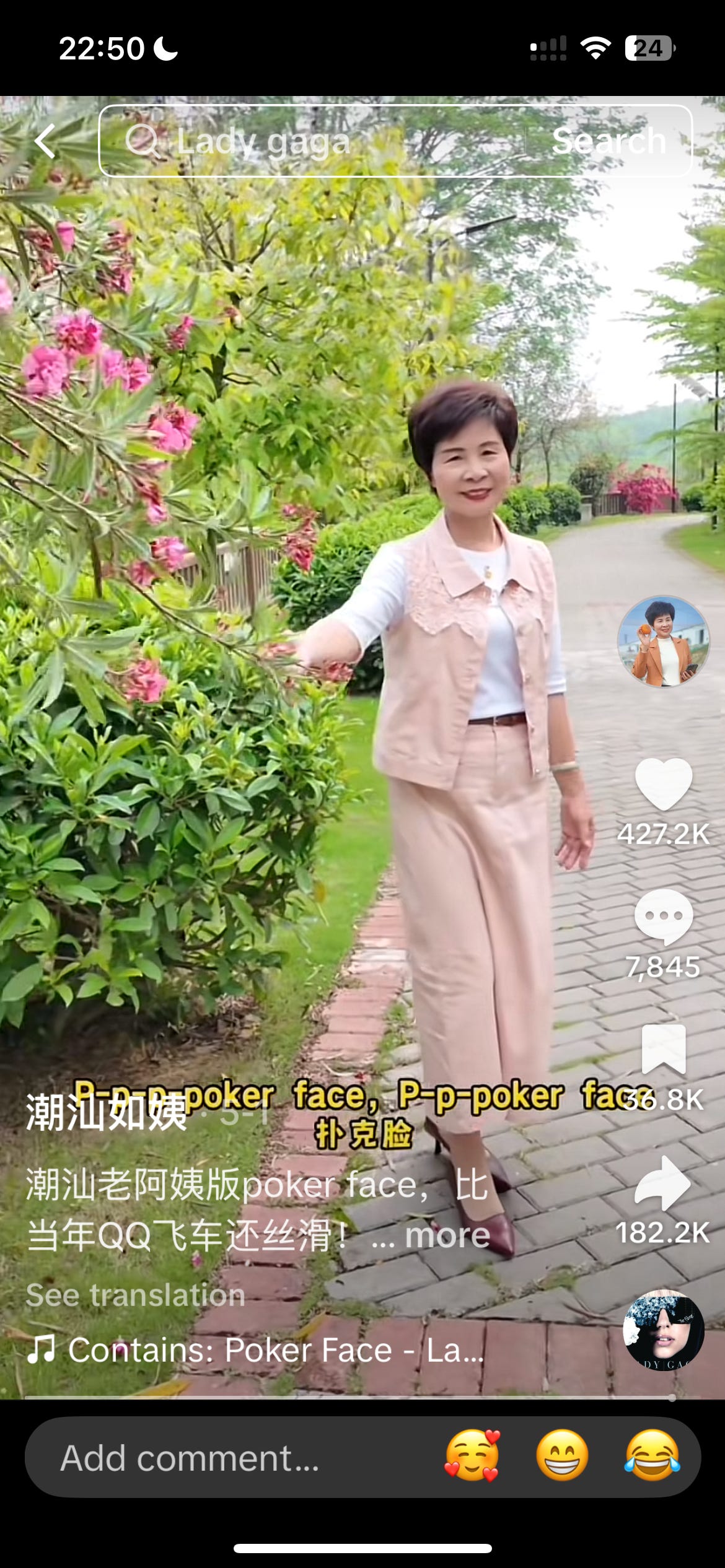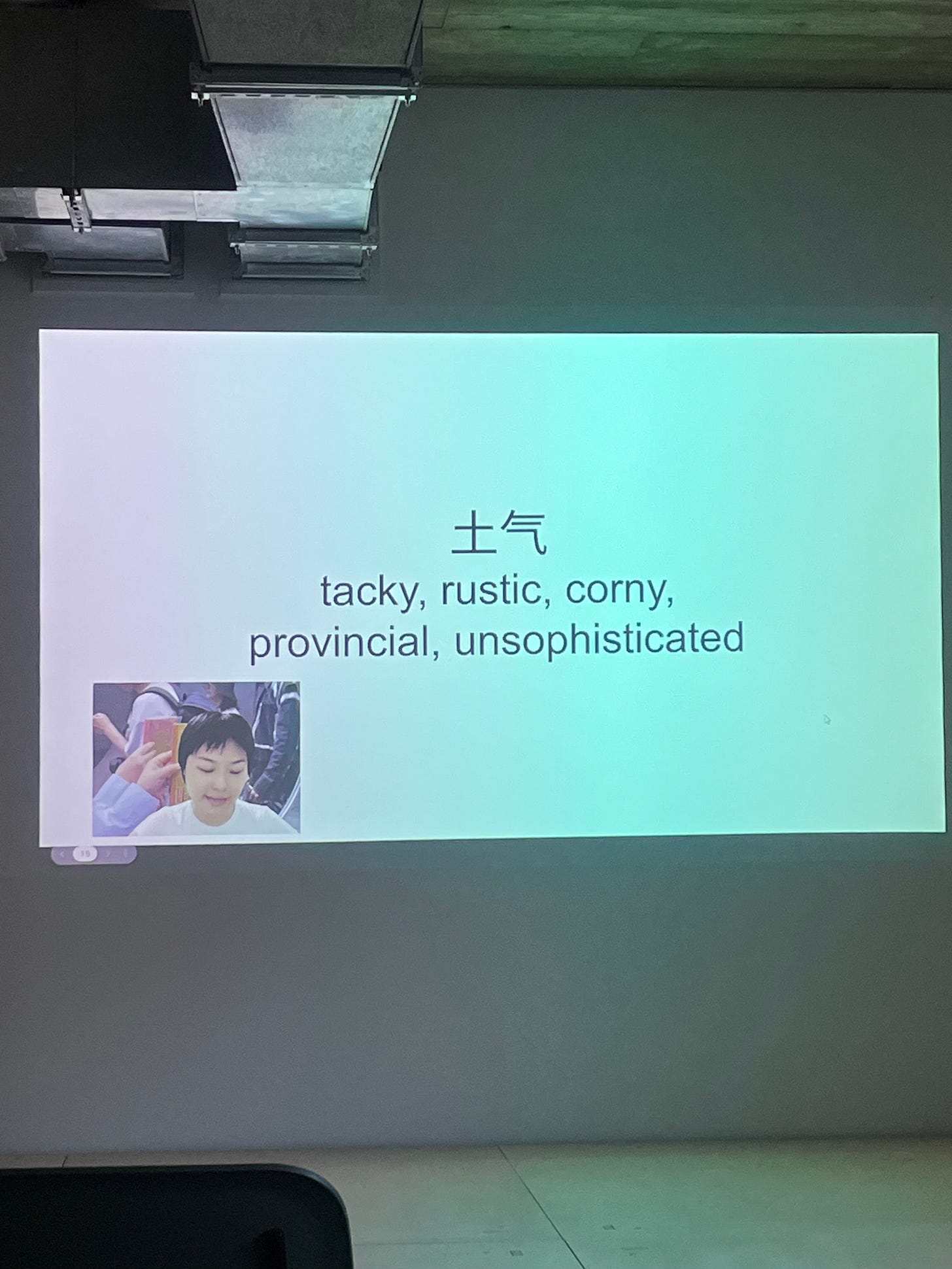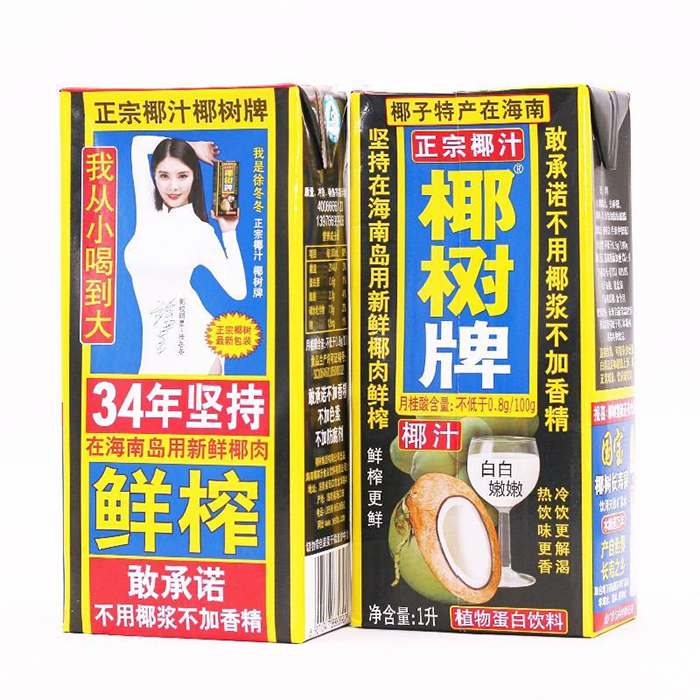"tǔ wèi" (土味) – the new ugly
the maximalist quotidien visual language of mass consumerist chinese culture as a language of resisting dead rhythms
recently i went to the launch of ye funa’s bumpkin cannon, a zine she created during her residency at asymmetry in london fields. in the zine is an essay by yifan wang who introduced me to a concept i have known all my life, but never had the lexicon to recognise. mainly because i do not speak chinese.
"tǔ wèi" (土味)
the maximalist quotidien visual language of mass consumerist chinese culture. in the cultural sector, this vernacular is reimagined beyond its intended purpose of provincial advertising through high art appropriation. graphic designers and visual artists repurpose cheap, mass design processes as a process of resistance; hacking the western design cannon (obedient, iterative, law-abiding) with the disruption of urgency, anti-art, ‘made in china’ kitsch. tǔ wèi (土味) is a language spoken in between lines, above is commercialism, below is rejectionism.
wang quotes the chinese designer huang heshan to describe the term which is also dubbed as “new ugly”, “jolie laide”, “high kitsch”, “township style”. huang writes about tǔ wèi as ‘wild design’: “a broad concept — how i describe everyday problems. this grassroots, non-professional approach is often rough, cheap, rogueish, even legally questionable, yet within it lies invaluable design wisdom and fundamental design logics that we’ve often overlooked.”
when i worked in design publishing, i first discovered tǔ wèi (土味) and immediately felt a deep rooted kinship. the aesthetic captured a multiplicity distinct to my identity. layers of opaqueness connecting my nostalgia for chaotic malaysian street culture, chinese directness, piles of clutter (my mum’s house distinct lexicon), hovering / breaking / circling / symbiotic to western systems of organisation and order.
in the language of content creation, tǔ wèi (土味) takes on another form. the immediacy of meme language locks into tǔ wèi organically creating an infinite loop between irony and functionally. subtitles as typographic lock ups. the blueprint for auntie + uncle content has all the makings to be a ‘core’ in its formula – virality + humour + easily recreated + distinct styling + accessories – but has escaped the acclaim so far.
wang writes: “tǔ wèi (土味) is about the act of editing, remixing, appropriating, and collaging tǔ wèi (土味) elements, lifting them from their usual, unexamined or unreflective contexts and translating them into language sharply attuned to cross-contextual juxtapositions with biting affective precision.”
a decolonial method, messing with the praxis of visual language. at her zine launch, yuna fe reminded me of this book, Dr. Bonaventure Soh Bejeng Ndikung’s Pidginization as Curatorial Method. when i first read it a couple years back, i found it to be an interesting framework for connecting with my ancestral malaysian pidgin english, reclaiming the syntax through the language of everyday interactions as well as linguistically. to honour and celebrate patois as opposed to reject it as grammatically incorrect.
when yuna brought it up during her talk, i understood it in a new context. it explains what every major art institution is trying to activate these days. rolling out strategies for nuanced pluraversity in an attempt to house as many perspectives as possible under one institutional roof. but for yuna, the book calls out how pidginisation is a language of resistance, and how tǔ wèi (土味) can also be understood as a rejection of traditional design standards. tǔ wèi (土味) as a language of resisting “canonical conventions, cultural stasis, ossified practices, dead rhythms, and singular forms.” tǔ wèi (土味) as a pidginisation of design praxis.
two predictions:
like how caribbean patois steers colloquial youth vernacular in the uk, tǔ wèi (土味) will be seen increasingly across mainstream channels of culture (high fashion, art institutions, mainstream media) specifically with brands attempting to accrue reverence with APAC youth markets.
as tǔ wèi (土味) becomes more mainstream, the new ugly design trends will rise from what our new technological era sees as tacky, ie what is oversaturated today. i think this will be ai generated content produced by the likes of midjourney, chat gpt, adobe, gemini and so on. or corporate memphis - think how frutiger’s aero is now trendy nostalgia. or cheaply produced 2d children’s show graphics like coco melon.
tǔ wèi (土味) came about because it defies neat categorisation. it sits in the messiness of the early days of globally digitised culture and the resulting hazards of firing neurones ping ponging across international messaging platforms, social media and web2 behaviours. if we now live, create, share and consume under techno feudal states, will aesthetic movements / cores / subcultures distributed online become the product of incentivised algorithms. part of the technostate’s plan to steer, predict and shape wider culture for political gain. the challenge lies in sitting with the messiness. in allowing shifting mechanisms to wash over us so we can probe, analyse, create and regenerate.









